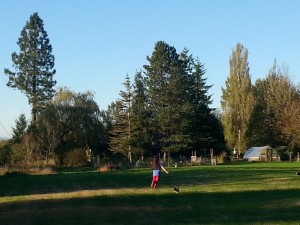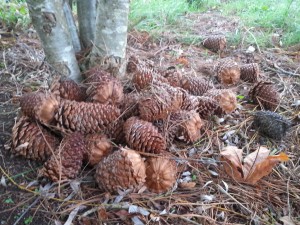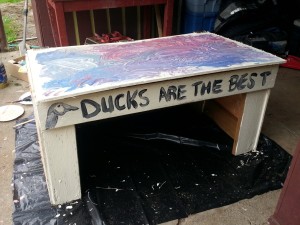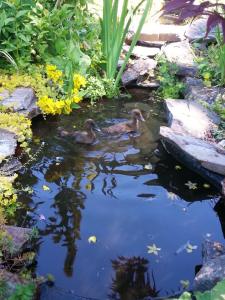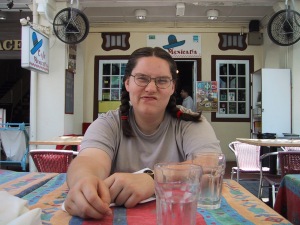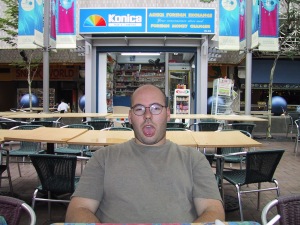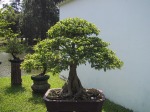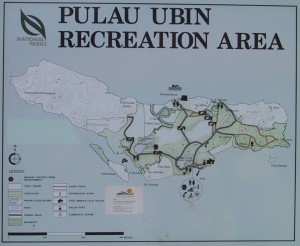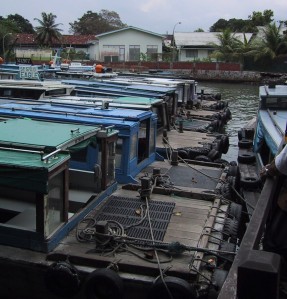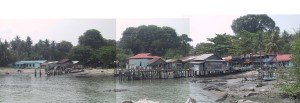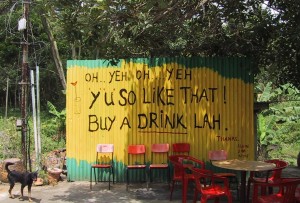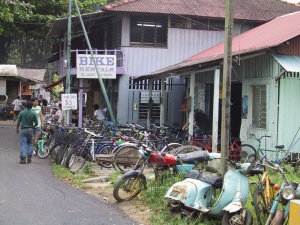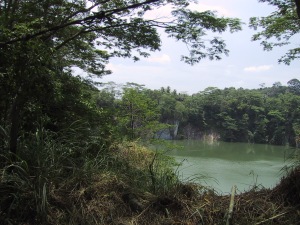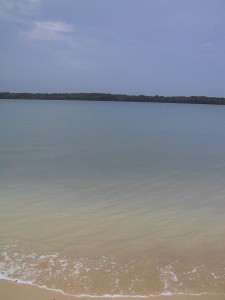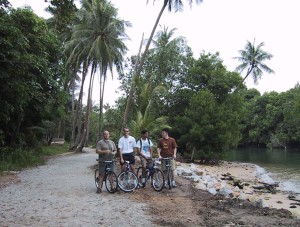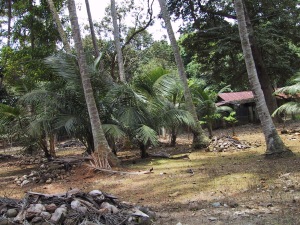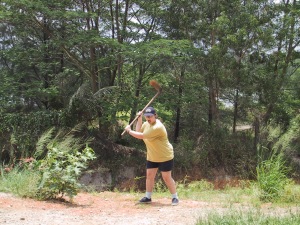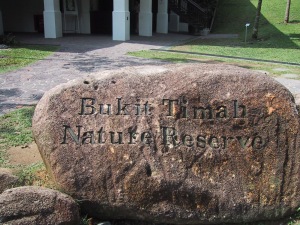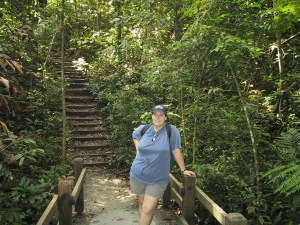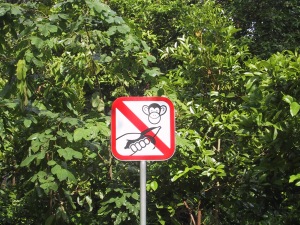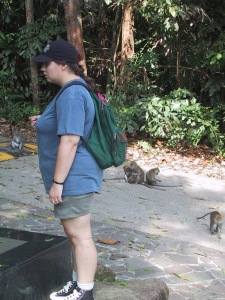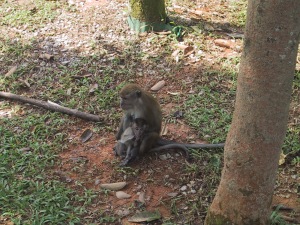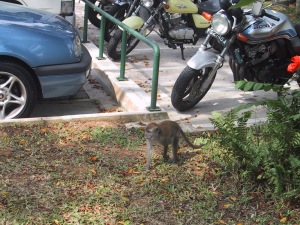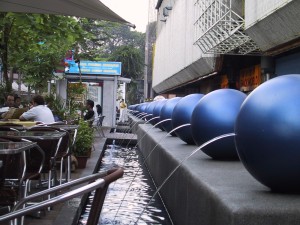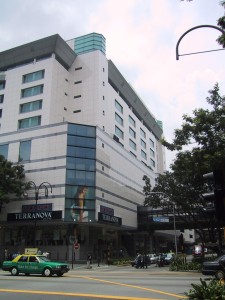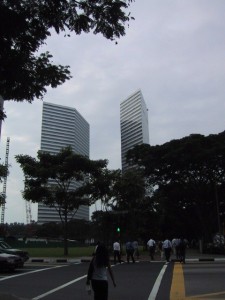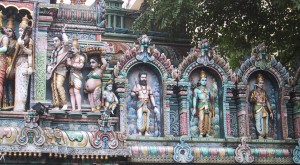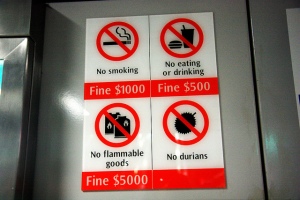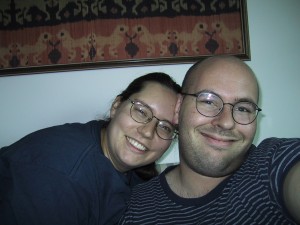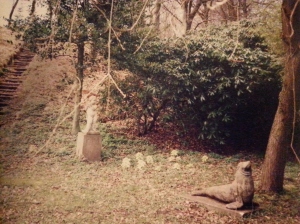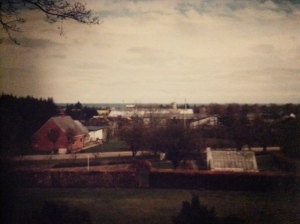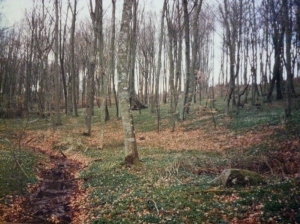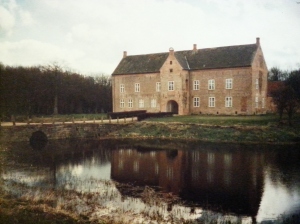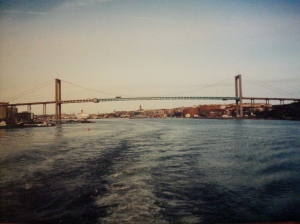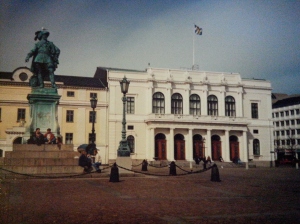Written September 9, 2015
I don’t hate or fear lizards, but not having grown up with reptiles larger then salamanders I am a bit unseasoned how to handle myself around them.
One weekend Will and I visited the Jurong Bird Park and Jurong Reptile Park. The Bird Park was amazing – there were huge, walk-in structures with netting over 20-stories high and oftentimes covering acres at a stretch, so that their collection of birds was free, flittering, extensive, noisy!, and amazing. Everywhere one walked and looked there were birds of every kind and color just hanging out on railings
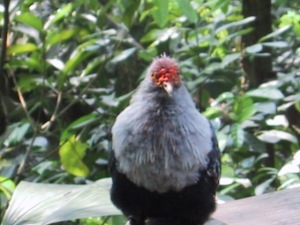
or nearby in the brush, or up above in the trees
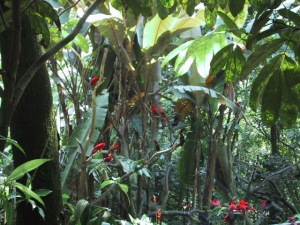
and fantastic canopy and environment provided by the park. Some of the enclosures were situated up a steep hillside, and climbing the rock stairways and ramps to the top was both exhausting and exhilarating. Outside the canopy there were acres of pools and larger fenced areas for emus and ostrich, cranes and flamingos.
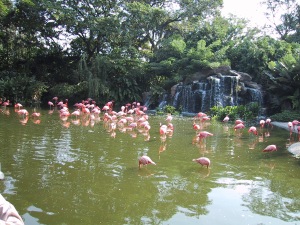
I’ve never seen so many in one group before. There were also rogue flamingos roaming the grounds stealing food.
There was also a huge freezer-room wherein they kept Emperor penguins, huddled around an icy pool of water, I heard these fine birds coo and mumble as they stood regarding us regard them.
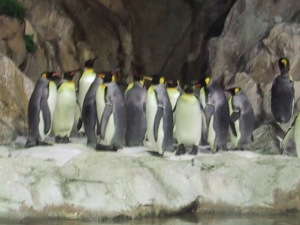
The Reptile Park, by compare, was sad and tired. The crocodiles and alligators lived in cramped and crowded pools with little room to roam.
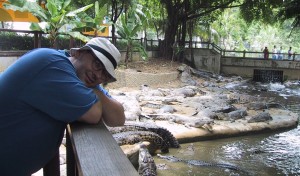
Right after this picture was taken some crocs got into a fight just below Will’s head.
Many of the animals were wounded, with open and oozing sores or missing eyeballs.
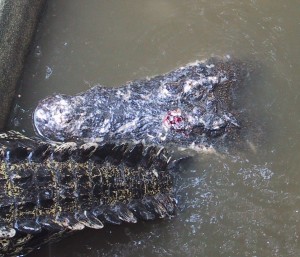
Ouchie.
There was a lot of terrifying and loud fighting, and the open pits were only a few feet away from the flimsy wooden fencing around the habitats, and when the animals got into a rumpus, it felt as dangerous as experiencing it in the wild. We quickly moved on. The smaller reptiles, snakes and turtles and the like, were housed in typical terrariums and were fun to look at.
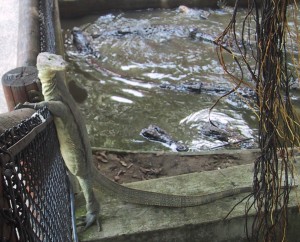
This cute little fella crawled in and out of enclosures following us around.
And the large turtles and komodo dragons were of course a treat to behold.
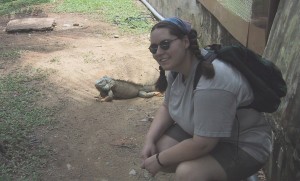
Chillin’ with my new BFF.
But the most unique aspect was the fact that the park’s owners were overt Buddhists, and had more prayer stations throughout the park than I had seen concentrated in any one area before or since.
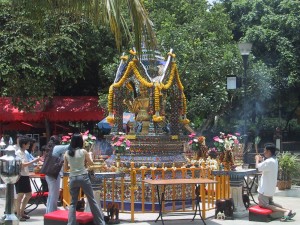
The red canopy beyond this temple is where we were expected to hang our coil incense.
Most of the gift shops and stands dotting the pathways sold mostly curled incense that one was to purchase, then hang along provided trellises nearby.
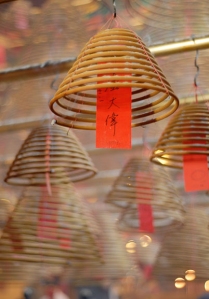
Burning incense coil similar to the ones at the reptile park. Our vendor wrote our names on a red sheet for us, too.
It was all so spiritual and foreign, I never felt more like an outside intruder then I did that day in that space. In fact, when we decided to save our fancy curled incense mobiles so that we might take them home as fun souvenirs the stand owner looked at us with such shock that she yelled instructions to hang and light the thing on the trellis so furiously that we complied, going through the motions until she turned away and we took our trophies down and ran like hell.
Since I didn’t work, I would spend my days wandering the areas between our apartment and Will’s corporate building. Most parks I toured were smaller, standard public spaces, such as the Istana Park just south of our apartment. Istana was a botanical garden with walkways and water structures that were both large and small. My favorite was a river and waterfall that were quite soothing to regard. Often I would sit by this structure, in the sweltering heat, and imagine I was by a cold and icy mountain stream. Water structures and fountains were a predominant feature in Singapore. Everywhere we went showcased some kind of artistic display, sometimes large indoor interactive structures amid gigantic shopping malls, other times stately and respecting, but always present. Considering how hot it was most of the time, it was nice, indeed, to have so much water on display. The sound, the movement, the artistic manipulations, it all served as a unique backdrop to the Singapore experience.
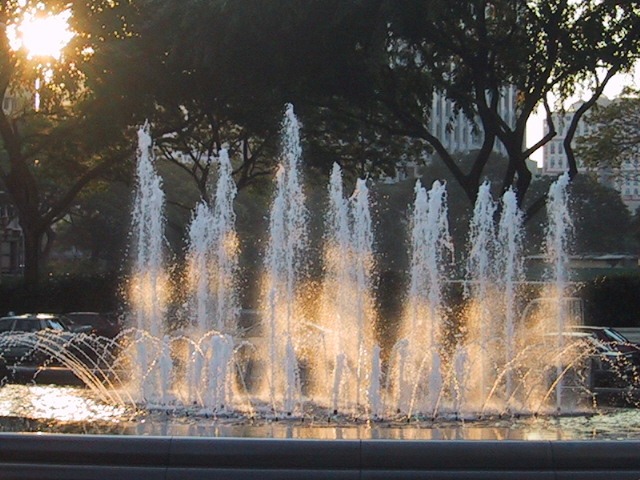
Gateway fountain outside Will’s corporate building.
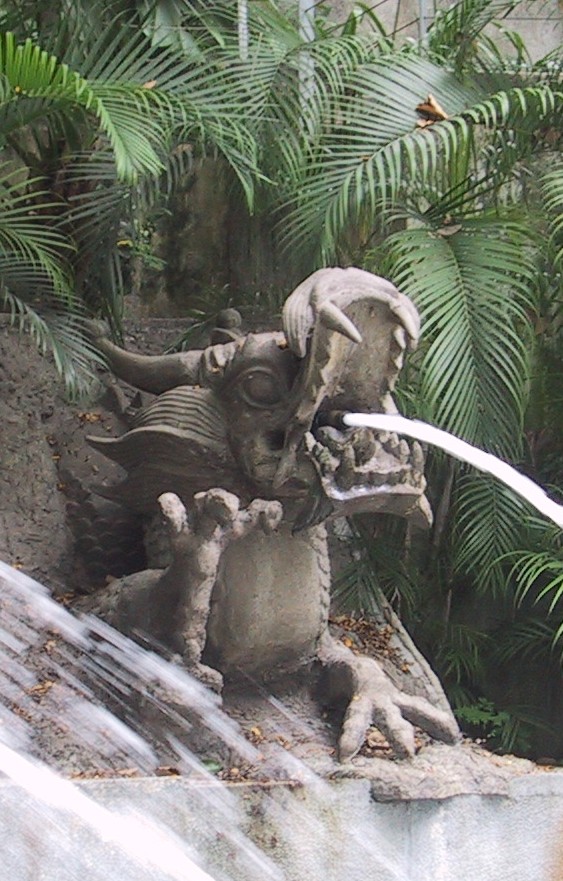
One of several spitting dragons around a pool near our apartment.
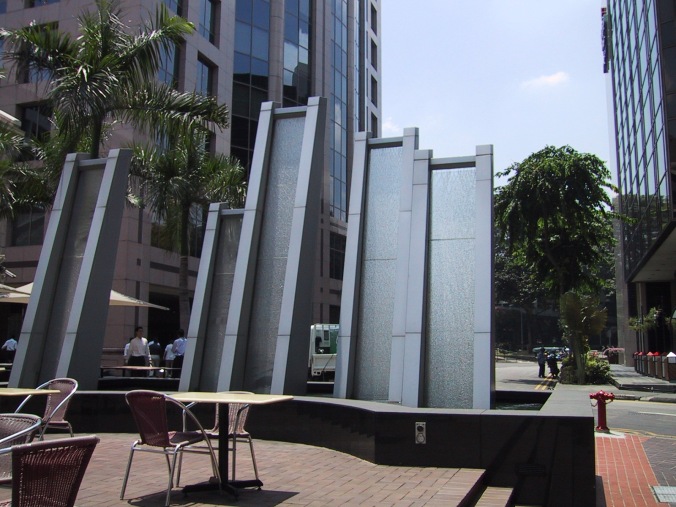
Cuppage Terrace water walls.
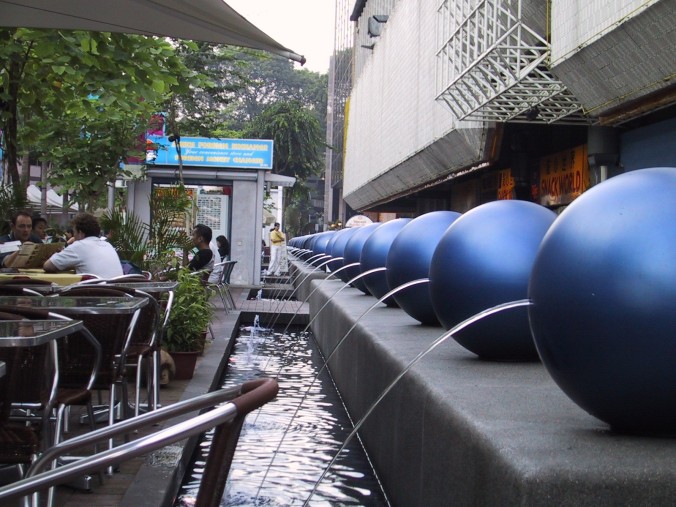
Cuppage Terrace’s blue balls.
(It is important to note that Singapore had just celebrated its 35th year of independence, and it was proud of its vast accomplishments. It was most proud of pulling itself up from a third-world country to a first-world country in only three decades. Having access to — and indeed an abundance of — clean drinking water is a perfect symbol of this transition and thus they relished in their water displays.)
I am a fan of museums, especially history museums, and so I spent a day in the National Museum of Singapore learning about how the tiny island in the middle of a major maritime thoroughfare between the South China Sea and trading ports along the Bay of Bengal and the Indian Ocean. Singapore means “Lion City” in Malay, though it is most likely named for wild-roaming tigers rather than actual lions. Regardless, most of the iconology of Singapore features some kind of lion, or mer-lion as the case may be. This iconology and the water fountains seemed to be pure Singapore to me, unique from the other influences that befell the tiny island throughout its long history.
Despite this I was still drawn to the Chinese and Japanese Gardens that surrounded Jurong Lake on the southwest side of the island. I had seen several Japanese gardens in my lifetime – including a fancy one in Seattle’s Arboretum. It was indeed tempting for me to want to experience what I considered to be a purer or “better” Japanese garden, assuming such because of our proximity to Japan. And so one day I boarded a west-bound train and sat for the longest subway ride I had taken to date. I was to travel to almost the last stop along the line, and disembark on a lonely, secluded (and kind of creepy) metro station at the north end of Jurong Lake.
To enter the park I had to take a poorly-kept pathway through an open field towards an outclumping of trees in the distance. There were no signs and the only way I knew I was heading in the right direction (or so I hoped) was that there was a 6-storey Chinese pagoda sticking out of the treetops like a beacon beckoning me onwards.
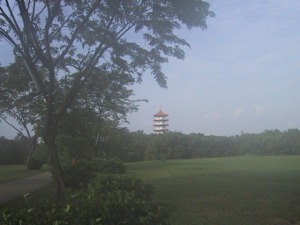
The only indication I was in the right place.
I don’t recall if there was a manned entrance/fee booth once I got to the park boundaries, but I somehow remember hopping over or around a turnstile and continued along a paved road towards the pagoda. The gardens themselves are located on two islands in the lake. I crossed a bridge that took me to the Chinese gardens first, and I took pleasure in meandering the area
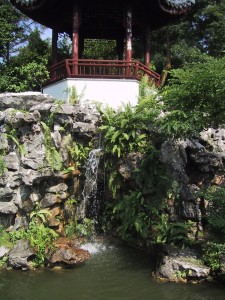
Lovely fern gully and waterfall.
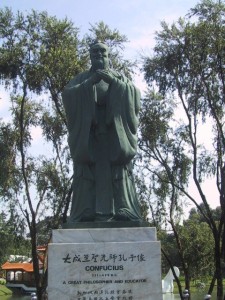
Confucius!
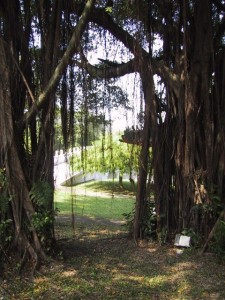
until I located a beautiful white marble bridge that led me to the Japanese gardens.
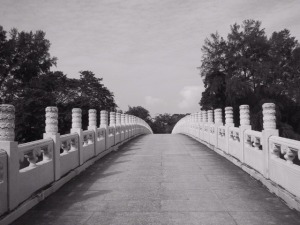
Check me out, I took a fancy black-and-white photograph!
I was a little let down by the Japanese gardens. They appeared a little bland and drab according to what I was expecting. There was a lot of greenways, a few nooks and groves, some bridges, but there was an empty, deserted sparseness to them that left me unsettled.
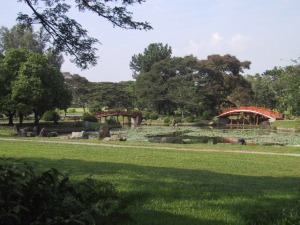
Quaint bridges and ponds were nice but lonely.
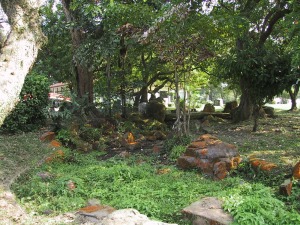
This was a quiet nook where I spent some time contemplating the emptiness.
There was also an odd buzzing noise that was ever-present throughout this part of the island…I never did locate its source or determine if it was some kind of insect or electrical sound. It was disturbing nonetheless.
The Chinese gardens, by comparison, were full of life and bursting with color and flowers and decorations. There happened to be a party or celebration in the park that day, and I kept bumping into throngs of people who were in attendance.
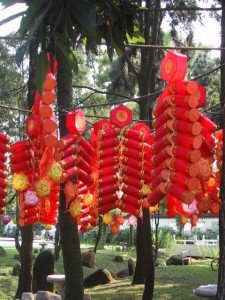
Giant firecracker decorations at the party in the Chinese garden.
I had my most fun inside the bonsai garden. In it I saw bonsai as I had never experienced it before. There were specimens in that garden that were over 150yrs old. I was amazed. A part of me became interested in someday taking up bonsai as a hobby and making beautiful creations of my own.
It was as I was leaving the park and heading back towards the metro station that I noticed a wild-roaming monitor lizard hanging out in the shrubberies and I decided to investigate and snap a picture or two. I had seen a cute little monitor at the reptile park and it seemed tame and harmless, why should this wild one be any different?
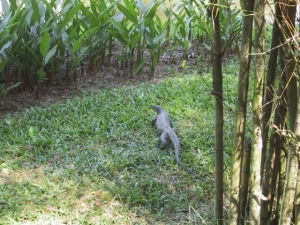
He made it as far as the thicket before turning on me.
This monitor allowed me several pictures as he tried to shy away before he decided he had had enough and charged me, mouth open and screeching in a way you only hear of in rapturous horror movies, and I nearly dropped my camera as I scrambled away. By the time I looked back he had retreated back into the brush.
Monitor lizards only charge when feeling threatened, and though this experience was tame it left me with a bit of weariness towards wild lizards in general. I from then on kept an eye over my shoulder whenever lizards were near, just in case. It startled me all the more, then, that day when my husband and I traveled to Pulau Ubin. We had gotten bad advice from either a cabbie or concierge, and ended up at the Changai Ferry Terminal, where there is only passage to the Malaysian mainland. As Will’s co-workers were conferring with some limousine drivers about directions and a possible ride, I wandered towards the edge of the parking lot to view the waters and Malaysia beyond. A ferry boat had just left, and as I watched it sail away I heard a scurrying below me. I looked down and a large, fat monitor lizard (of a different type then the little guys in the park) was running through a drainage culvert just below my feet. It was maybe half the size of a crocodile, and it was making such a ruckus that I yelped and hurried back to the safety of the menfolk in the distance.
I’d had enough out-of-control reptiles to last a lifetime, thankyouverymuch.
